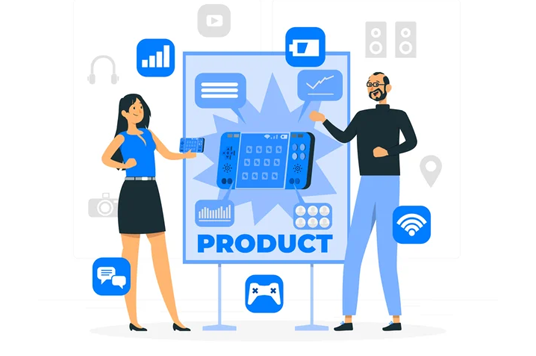In the rapidly evolving landscape of product development, mastering prompt engineering has become an essential skill for Product Managers. As artificial intelligence (AI) and large language models (LLMs) like ChatGPT, Claude, and Gemini become integral to product workflows, the ability to craft effective prompts is no longer optional. It's a strategic necessity.
Prompt engineering empowers Product Managers to interact with AI tools efficiently, translating business objectives into actionable AI tasks. This skill enables faster iterations, more consistent outputs, and ultimately better product experiences for users. By understanding and applying prompt engineering techniques, Product Managers can streamline processes, enhance creativity, and drive innovation within their teams.adaline.ai
This comprehensive guide delves into the importance of prompt engineering for Product Managers, exploring its role throughout the product lifecycle, core techniques, practical use cases, common challenges, and future implications. Whether you're new to AI tools or looking to refine your skills, this guide provides the insights needed to harness the power of prompt engineering effectively.
What is Prompt Engineering?
Prompt engineering is the art and science of crafting inputs—called prompts—that guide generative AI models to produce specific, relevant, and useful outputs. While AI models like ChatGPT or Claude are trained on vast amounts of data, their effectiveness depends largely on how well a prompt communicates the task at hand. For Product Managers, this represents a new form of interaction—one that doesn’t require coding, but rather clarity of thought, creativity, and strategic intent.
Unlike traditional programming where precise syntax and logic govern the output, prompt engineering relies on natural language. This means Product Managers can now interface directly with powerful AI systems without needing a deep technical background. A well-crafted prompt can help generate product specs, synthesize user feedback, draft customer communications, or brainstorm features—all within seconds.
Effective prompt engineering involves understanding how AI interprets language, anticipating its biases, and refining prompts through iteration. This practice enables PMs to extract more accurate, actionable, and nuanced responses. It's not just about giving instructions; it’s about shaping the behavior of AI to align with business goals.
As the influence of AI grows across product functions, prompt engineering is becoming a foundational skill—one that empowers Product Managers to become more agile, creative, and data-driven in delivering exceptional user experiences.
The Role of Prompt Engineering in the Product Lifecycle
Prompt engineering isn’t just a one-off task for AI experimentation—it can enhance value across the entire product lifecycle. From concept to customer feedback, every phase presents opportunities to apply prompting strategically. For Product Managers, integrating AI through well-crafted prompts can accelerate decision-making, improve cross-team alignment, and surface creative solutions faster than ever before. This makes prompt engineering not just a tactical tool but a strategic enabler for innovation at scale.
Ideation
During the ideation phase, prompt engineering facilitates brainstorming sessions by generating diverse ideas and solutions. For instance, prompts like "List innovative features for a fitness tracking app targeting millennials" can yield creative concepts that align with target demographics.
Design
In the design phase, prompts can assist in creating user personas, journey maps, and wireframes. By inputting prompts such as "Generate a user persona for a 30-year-old urban professional using a budgeting app," AI tools can provide detailed profiles that inform design decisions.
Development
Prompt engineering aids development by generating user stories, acceptance criteria, and even code snippets. For example, a prompt like "Create user stories for a feature that allows users to set savings goals" can streamline the development process.
Launch & Post-launch
Post-launch, prompts can be used to analyze user feedback, generate marketing content, and plan future updates. A prompt such as "Summarize user reviews to identify common complaints about the new feature" helps in quickly pinpointing areas for improvement.
By embedding prompt engineering into each phase of the product lifecycle, Product Managers can create a more adaptive and insight-driven process. This not only shortens the time from idea to execution but also empowers teams to make more confident, data-backed decisions throughout the product’s evolution.
Core Techniques Every PM Should Know
Mastering prompt engineering starts with understanding the various techniques used to extract high-quality outputs from AI systems. For Product Managers, these techniques are essential for leveraging AI in diverse product workflows—whether it’s ideating new features, writing specs, or summarizing user feedback. By becoming familiar with these methods, PMs can move beyond generic prompts to more precise, strategic ones that deliver consistent and contextually rich results.
Each technique below offers unique strengths and use cases. The more a PM understands when and how to use them, the more value they can derive from generative AI tools. Importantly, prompt engineering is iterative: experimenting with variations, refining phrasing, and learning from outputs are all part of building prompt fluency. Here's a breakdown of the most important techniques every PM should know and start applying in their day-to-day workflows.
Zero-shot Prompting
This technique involves asking an AI model to perform a task without providing any examples or context beyond the task description itself. For instance, a prompt like “Write a feature description for a sleep-tracking mobile app” uses zero-shot prompting. It’s useful when the task is straightforward, but it can result in vague or overly broad outputs if the prompt lacks clarity.
One-shot and Few-shot Prompting
With one-shot prompting, you provide one example to guide the AI’s response. Few-shot involves offering two or more examples. This technique helps anchor the model in the style, structure, or tone you want. For example, after giving one well-written product requirement, you can prompt the AI to write another in the same format. This significantly improves reliability and consistency of outputs.
Role Prompting
Role prompting enhances contextual accuracy by assigning the AI a specific role before giving it a task. For example, starting a prompt with “You are a product marketing expert...” ensures the AI adopts the tone, terminology, and focus relevant to that role. It’s especially useful for content generation, strategic planning, or scenario simulation where perspective matters.
Chain-of-Thought Prompting
This method guides the AI to break down its reasoning step-by-step. For example, “List steps to reduce churn rate in a mobile subscription product, and explain the logic behind each step.” This encourages the model to move beyond superficial suggestions and instead walk through logical reasoning. It's highly effective for decision-making and complex problem-solving tasks.
Iterative Refinement
Iterative prompting is the process of refining prompts based on previous outputs until the desired result is achieved. A PM might start with a general prompt, then narrow it based on the AI’s response, adding constraints or rephrasing until the output aligns with expectations. This mirrors agile methodology: rapid iteration, evaluation, and improvement.
Each of these techniques gives Product Managers a practical way to better control AI-generated outputs. Knowing which approach to use in a given situation can be the difference between mediocre results and game-changing insights. As you get more comfortable with these techniques, you’ll be able to translate your product thinking into precise, high-performance prompts. This not only enhances productivity but also positions you as a strategic leader in the era of AI-powered product management.
Use Cases: Prompt Engineering in Action for Product Teams
Prompt engineering isn’t just a theoretical skill—it delivers measurable value across real product workflows. Product Managers and their teams can apply prompting to a range of activities that traditionally require hours of manual work or cross-functional input. With the right prompt, AI can help accelerate discovery, support user-centric design, enhance communication, and even power customer-facing features.
Whether you’re part of a lean startup team or managing complex enterprise products, the following use cases demonstrate how strategic prompting can enhance velocity, reduce friction, and scale up creativity. The key is identifying repetitive, text-based, or decision-support tasks that AI can augment—then crafting prompts that align with your product’s tone, goals, and audience.
AI-powered User Research Synthesis
By prompting AI to analyze and summarize user interviews or survey responses, PMs can quickly extract themes and key pain points. For example, a prompt like “Summarize five user interviews for feedback on our onboarding process” enables AI to synthesize qualitative data into actionable insights. This saves hours of manual analysis and helps product teams respond to user needs faster.
Creating Detailed Personas and User Journey Maps
Crafting user personas typically takes time and cross-team collaboration. With prompting, you can quickly generate well-rounded profiles using real or hypothetical data. For instance, “Create a persona for a 28-year-old remote worker using a mental wellness app” can yield a nuanced description including goals, behaviors, and frustrations. These outputs support better UX and product design decisions.
Writing Effective Release Notes and Onboarding Flows
Clear communication is vital during product updates. Prompts such as “Write release notes for a feature that adds multi-language support” help generate structured, user-friendly copy. Similarly, “Create a first-time user onboarding flow for a feature-rich dashboard” can result in a coherent step-by-step guide. These outputs keep users informed and improve adoption rates.
Enhancing Communication with Engineering or Design Teams Using AI
AI can act as a translator between technical and non-technical stakeholders. Prompts like “Explain our new API changes in simple terms for the design team” or “Summarize the product spec into key tasks for developers” bridge communication gaps. This enables better alignment across disciplines, especially in remote or asynchronous environments.
Prompt engineering allows teams to work smarter by reducing time spent on repetitive tasks and enabling rapid iteration across product touchpoints. From research to rollout, prompting transforms how product teams approach their day-to-day work. It allows PMs to move faster, make more informed decisions, and focus their energy on strategic challenges rather than administrative tasks. As these use cases show, when used thoughtfully, prompting becomes a powerful extension of the product team’s capabilities.
Common Challenges and How to Avoid Them
While prompt engineering offers immense potential for Product Managers, it’s not without its pitfalls. Like any new skill or tool, its effectiveness depends on how well it’s understood, implemented, and evaluated. Without clear strategies, teams may fall into traps that undermine the value of AI or, worse, introduce risks to the product development process. Common issues include unclear prompts, blind reliance on AI, and mishandling of user data—all of which can erode trust, produce poor outcomes, or introduce legal and ethical complications.
Understanding these challenges is the first step to avoiding them. By proactively addressing potential problems and establishing best practices, Product Managers can ensure their use of prompt engineering is both responsible and effective. The following are key obstacles you might face, along with actionable guidance on how to overcome each.
Ambiguous Prompts Leading to Inaccurate Results
One of the most frequent mistakes is crafting prompts that are too vague, broad, or open to interpretation. This often leads to outputs that miss the mark or are irrelevant. For instance, “Write a feature spec” is far less effective than “Write a feature spec for a budgeting tool that helps freelancers set monthly savings goals.” The more specific and detailed the prompt, the more useful the output.
Over-reliance on AI Without Human Validation
AI tools are powerful but not infallible. Treating AI-generated content as final without review can lead to flawed decisions or misaligned strategies. For example, an AI-generated user persona might overlook key contextual nuances. Always apply critical thinking and human oversight to verify accuracy, tone, and relevance before incorporating any output into product workflows.
Ethical and Privacy Concerns When Using User Data
Feeding user data into AI systems without proper safeguards can raise serious ethical and legal issues. If you prompt an AI with raw customer conversations or behavioral logs, you risk violating privacy standards or data protection laws like GDPR. Always anonymize data, obtain user consent when necessary, and avoid sharing identifiable or sensitive information with third-party tools.
Avoiding these common challenges isn’t just about preserving the quality of AI outputs—it’s about building a responsible, scalable approach to prompt engineering within your organization. When Product Managers embrace clarity in their prompts, maintain critical oversight, and respect user data boundaries, they not only unlock AI’s full potential but also build trust with both users and internal stakeholders. These habits will define sustainable success in the era of AI-assisted product management.
Tools and Platforms to Explore
As prompt engineering becomes a key skill in product management, the tools you use can greatly influence how effective your prompts—and outputs—are. There’s a growing ecosystem of platforms designed specifically for interacting with generative AI models, optimizing prompts, and integrating AI into everyday workflows. Product Managers should not only understand these tools but also actively explore and test them to determine what fits best within their product lifecycle.
These tools range from conversational AI interfaces to visual generation engines and even marketplaces of pre-tested prompts. Each serves different purposes—some help you experiment with text prompts, while others help embed AI into your product’s backend. The better you understand the strengths of each tool, the more efficiently you can apply them to real product challenges.
ChatGPT (OpenAI)
ChatGPT is one of the most versatile and widely adopted generative AI tools. It allows you to create, test, and refine prompts in a conversational format. Product Managers can use it for tasks like drafting specifications, summarizing research, writing emails, and more. With its API, you can even integrate ChatGPT into your products or internal tools for scalable use.
Claude (Anthropic)
Claude is designed with safety and alignment in mind. It excels in scenarios that require ethical reasoning, nuanced judgment, and a higher standard of content safety. For PMs working in regulated industries (like healthcare or finance) or building AI copilots with trust considerations, Claude offers a dependable alternative to more general-purpose models.
Midjourney
Midjourney is an AI-powered image generation tool that transforms text prompts into detailed visuals. Product teams can use it to rapidly generate mockups, concept art, or moodboards without involving a designer at early stages. For feature pitches or design brainstorming, it’s a creative accelerator that aligns visual thinking with product vision.
Jasper
Jasper is a content-focused AI platform that helps with marketing, UX copywriting, and brand-aligned messaging. Its prompt templates are tailored for tone, persona, and channel—making it especially useful for PMs working closely with marketing and content teams. It streamlines tasks like writing onboarding messages, email campaigns, or landing page content.
Prompt Marketplaces and Libraries (e.g., PromptBase)
Prompt marketplaces like PromptBase offer a catalog of pre-tested, high-performing prompts for specific use cases. PMs can use these as inspiration or purchase refined prompts that save time. This is especially helpful when starting out or trying to quickly implement AI for unfamiliar tasks. You can also build and share your own prompt libraries internally.
By investing time into learning and testing these platforms, Product Managers can not only enhance their own workflows but also lead the charge in integrating AI capabilities across their organizations. The tools you choose should align with your product’s goals, technical environment, and team needs. As AI continues to evolve, staying updated on new entrants in this space is crucial to maintaining your competitive edge.
Building Prompt Literacy Across Product Teams
Prompt engineering shouldn’t remain an isolated skill limited to a single Product Manager. As AI becomes foundational to product development, building prompt literacy across the entire team—including designers, marketers, researchers, and engineers—can drive faster innovation and better outcomes. Everyone benefits when the broader team knows how to ask the right questions, frame the right instructions, and evaluate AI outputs effectively.
Creating a shared understanding of how to work with generative AI tools fosters greater collaboration and reduces dependencies. It helps ensure consistency in quality, output expectations, and ethical practices. In this context, prompt literacy becomes as important as data literacy—something that’s gradually embedded into a team’s DNA. Below are key strategies to scale prompt capabilities across your product organization.
Training Sessions and AI Experimentation Sprints
Conduct regular workshops or “prompt labs” where teams explore how AI tools can solve real business problems. These sessions not only build hands-on experience but also surface innovative use cases. For example, cross-functional teams might be tasked with generating mock user personas or feature briefs using different prompting styles, then compare results and refine.
Creating Internal Prompt Playbooks or Libraries
Just as design teams create style guides, product teams should maintain prompt libraries—collections of effective, tested prompts for common tasks. These playbooks help reduce the learning curve for new team members and ensure consistency in tone, structure, and quality across different outputs. Over time, these libraries become strategic assets.
Encouraging a Culture of Prompt Sharing and Iteration
Foster an environment where team members freely share successful prompt examples or learnings. Slack channels, shared docs, or internal forums can serve as collaborative spaces for prompt experimentation. This iterative culture helps teams collectively refine techniques, discover edge cases, and avoid repeating ineffective approaches.
Building prompt literacy isn’t a one-time initiative—it’s an ongoing cultural shift that equips your team for long-term success in an AI-augmented world. By democratizing access to prompt knowledge and embedding it into daily workflows, you transform prompting from a specialized skill into a shared superpower. The result? More empowered teams, faster feedback loops, and a more agile approach to building intelligent products.
Future of Prompt Engineering for PMs
Prompt engineering is rapidly evolving from a technical curiosity into a strategic capability—and for Product Managers, it’s shaping up to be one of the defining competencies of the next generation. As AI technologies become more deeply embedded in products and workflows, the way PMs interact with and shape AI behavior will directly impact product quality, user experience, and team productivity.
Rather than being just a tool for speeding up tasks, prompt engineering is becoming a medium through which PMs express product vision, guide AI features, and even influence how users engage with intelligent systems. This transition places PMs at the intersection of language, design, and logic—empowering them to take on a more creative, cross-functional, and systems-thinking role. Below are some key ways prompt engineering is set to redefine the PM role.
Role of PMs in Shaping AI Behavior
As AI becomes more user-facing—through chatbots, recommendation engines, and co-pilots—PMs will play a bigger role in crafting the interactions users have with these systems. That includes designing the prompts that guide AI responses and ensuring the tone, behavior, and outputs align with brand values, UX guidelines, and product goals.
How Prompt Engineering Can Evolve into a Core PM Skillset
Just as data analysis, agile workflows, and stakeholder communication became essential PM skills, prompt engineering is joining that list. It’s not just about knowing the tools—it’s about integrating them into decision-making, feature scoping, and team processes. PMs who can translate business problems into effective prompts will lead more adaptive and AI-forward product strategies.
The Intersection of Prompt Engineering with Product Strategy
Prompt engineering isn’t limited to execution; it influences the very direction of products. PMs can use prompts to prototype ideas, gather synthetic research, or simulate edge cases—all before a single line of code is written. This opens the door to faster validation, leaner iteration cycles, and more strategic experimentation.
Looking ahead, prompt engineering is not a passing trend—it’s the beginning of a new paradigm in product development. PMs who adopt this skill will be better equipped to lead AI-native teams, design AI-integrated experiences, and navigate the ethical and technical challenges that come with AI adoption. As products become increasingly intelligent, the ability to shape and steer that intelligence through language will be one of the most valuable and differentiating skills a PM can have.
Take the Next Step in AI-Driven Product Leadership
As AI reshapes the future of product development, prompt engineering emerges as a critical skill for forward-thinking Product Managers. From ideation to launch, the ability to effectively communicate with AI tools can accelerate innovation, reduce friction across teams, and deliver higher-impact solutions.
You’ve explored the foundational techniques, practical applications, and common pitfalls. You’ve seen how prompt engineering empowers product teams—from automating tasks and synthesizing research to enhancing creativity and strategy. But mastering this discipline isn’t just about efficiency—it’s about gaining a deeper understanding of how your products can evolve in an AI-first world.
Now is the time to invest in building prompt engineering skills across your teams. Encourage experimentation. Build your own prompt libraries. And explore tools and workflows that make prompt engineering a core part of your product strategy.
At Classic Informatics, we help enterprises, startups, and product teams integrate AI into their development pipelines. Whether you're looking to fine-tune large language models for your product or train your team in prompt engineering, our AI and product engineering experts are here to help.
Ready to unlock the power of AI-driven product leadership?
Explore our AI Development Services or get in touch to discuss how we can bring intelligent automation and innovation into your products.





















